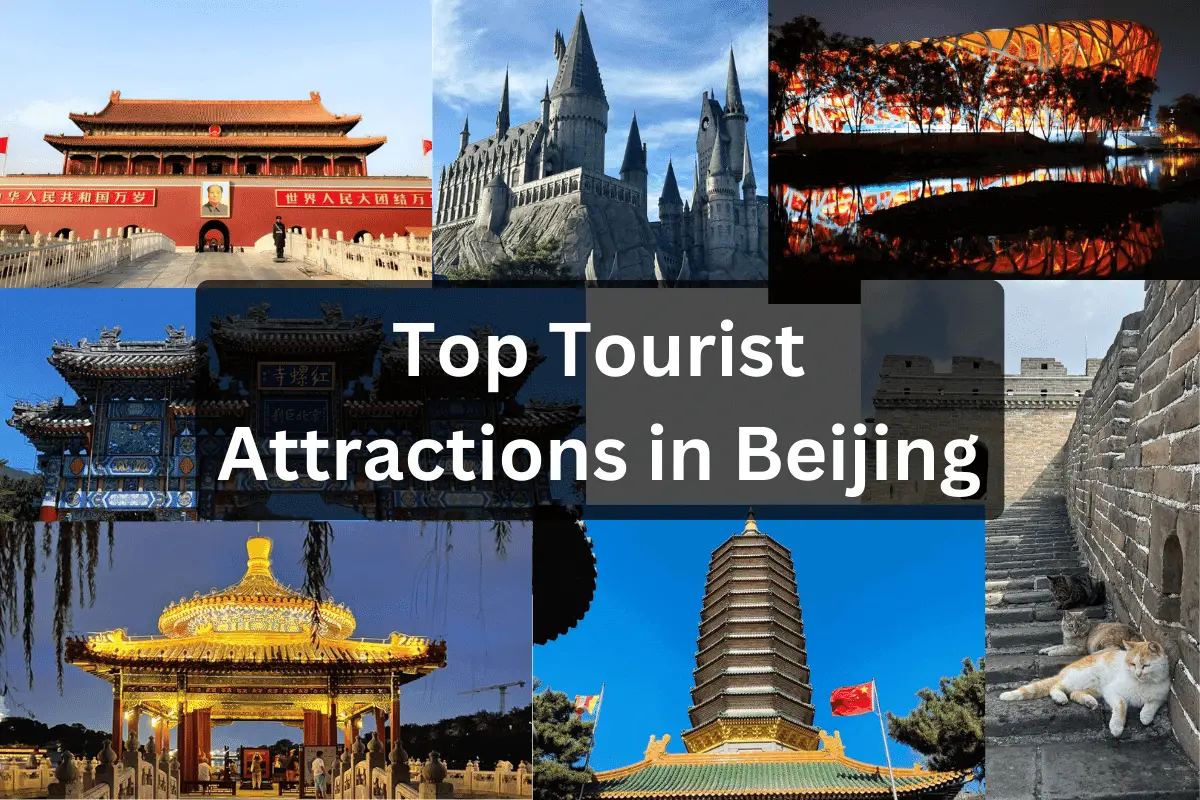You're absolutely right!
This is the place where you can find some of the most worthwhile and unique things to do in Beijing.
As the capital of China for centuries, Beijing is a globally renowned city that attracts millions of tourists every year.
I've been to Beijing many times, and apart from the most famous attractions like the Forbidden City and the Great Wall, I've also experienced many cool activities known only to locals.
Here, you can get the best travel tips and advice to make the most out of your visit.
Ready to discover all the top things to do in Beijing?
Let’s get to it!
The Best Attractions in Beijing
1. The Forbidden City(The Palace Museum)

The Forbidden City is a palace complex located in the heart of Beijing, China. It was the former home of the Chinese Emperors for over 500 years, from the Ming Dynasty (1368-1644) to the Qing Dynasty (1644-1911).
It is now a museum that houses a vast collection of art and artifacts from the imperial era.
The Forbidden City is a UNESCO World Heritage Site and one of the most popular tourist attractions in China.
It is one of the must-see for anyone visiting Beijing.
Tips for Visiting The Forbidden City
- Book in advance. You need to book tickets in advance and bring your passport with you.
- Arrive early. The Forbidden City opens at 6:30 am and it is best to arrive early to avoid the crowds.
- Wear comfortable shoes. You will be doing a lot of walking, so it is important to wear comfortable shoes.
- Be respectful of the rules. There are a few rules that you need to follow when visiting the Forbidden City, such as no photography inside some of the buildings and no smoking.
- Take a guided tour. A guided tour can be a good way to learn more about the history and significance of the Forbidden City.
🌟Best Forbidden City Tours
2. The Badaling Great Wall
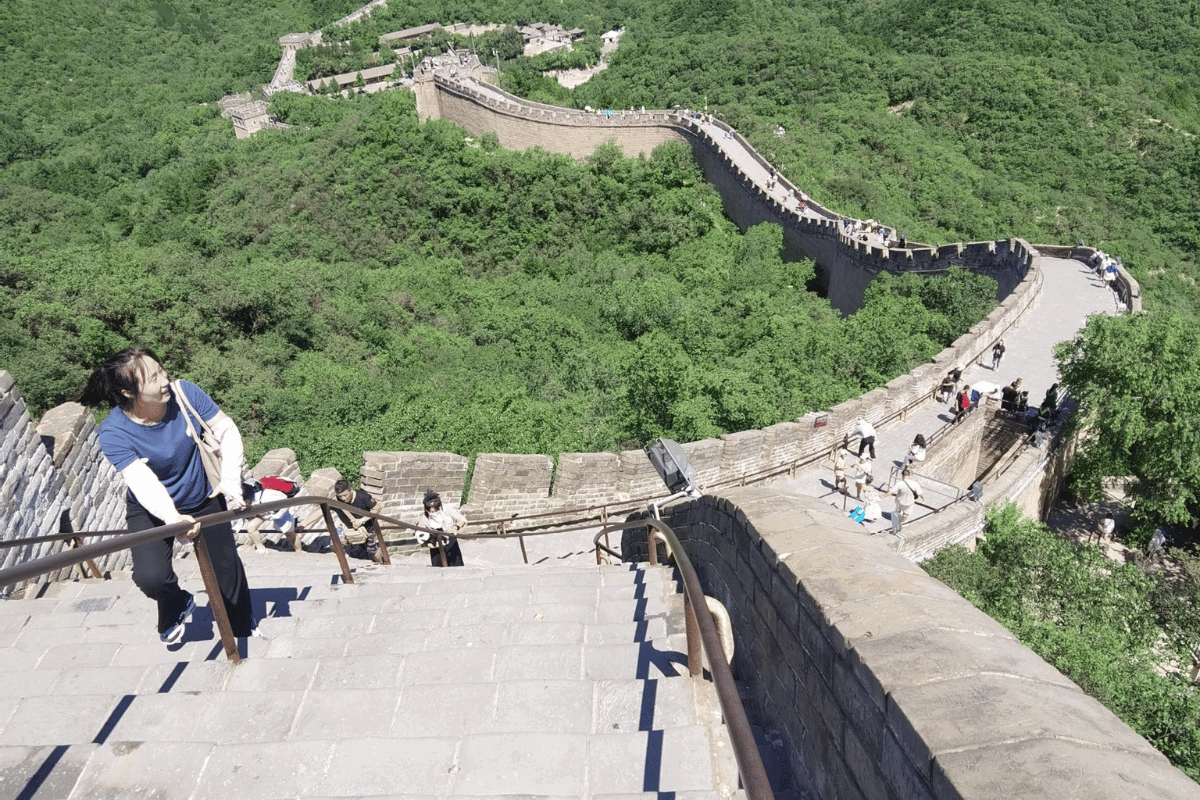
The Badaling Great Wall is one of the most popular sections of the Great Wall of China. It is located about 70 kilometers (43 mi) northwest of Beijing and is the most accessible section from the city.
The wall was built during the Ming Dynasty (1368-1644) and is considered to be one of the best-preserved sections of the Great Wall.
The Badaling Great Wall is a popular tourist destination and can get crowded, especially during the peak season (April to October).
There are a number of things to do at Badaling, including hiking, taking a cable car, and visiting the nearby Mutianyu Great Wall.
Tips for Visiting The Badaling Great Wall
- Go early. Badaling is incredibly popular and gets very crowded, especially in summer. Arrive right when it opens at 7am to avoid crowds.
- Be prepared to climb. There are steep stairs and inclines along the wall. Come prepared for a good workout! Taking breaks is fine and expected.
- Don't miss the museums. There are several museums at the base with exhibits about the wall's history and construction methods. Leave time to visit these too.
- Hire a guide. Guides are available for hire and provide history and context about construction of the wall. This enhances the experience.
- Bring proper shoes. The wall has steep steps and uneven terrain. Wear sturdy walking shoes with good grip. Bring snacks and water too.
- Consider the cable car up. Walking up to the wall is exhausting. Ride the cable car for easier access and to save energy for exploring the wall.
🌟Best Badaling Great Wall Tours
3. The Mutianyu Great Wall
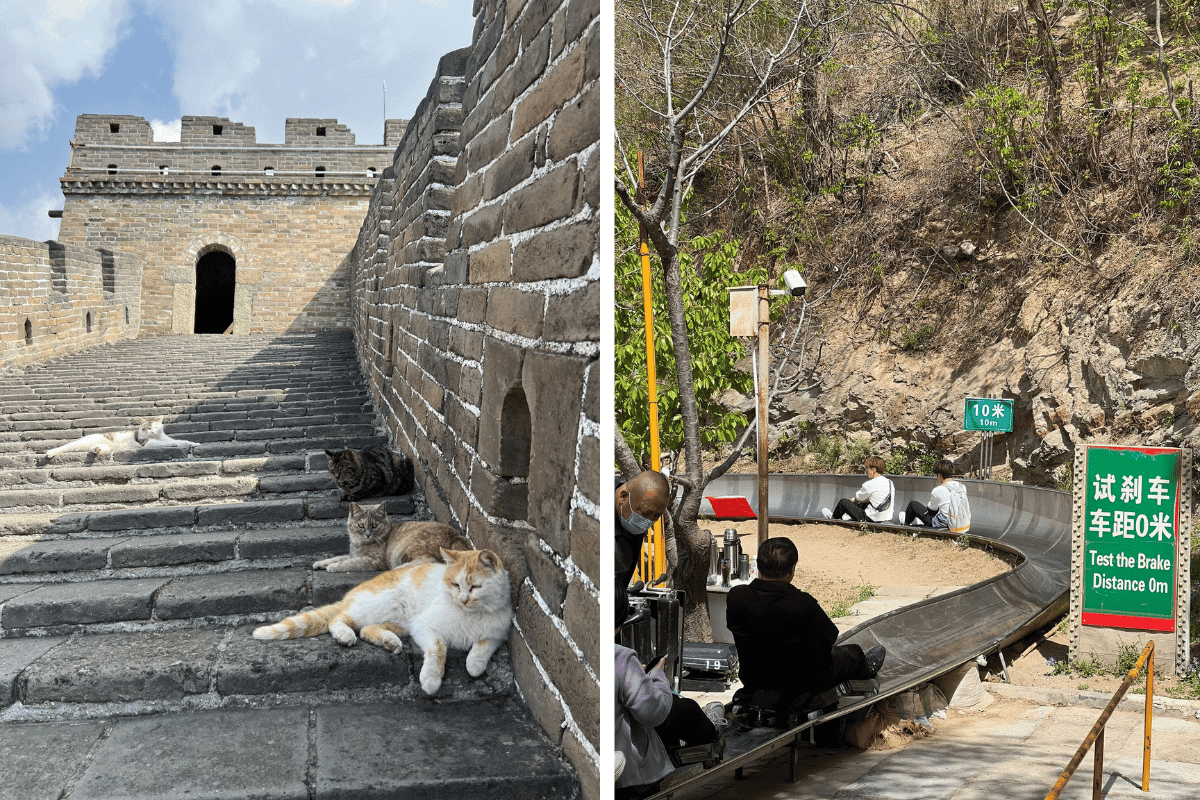
The Mutianyu Great Wall is another section of the Chinese Great Wall. It's not as popular as Badaling, which means it's less crowded.
However, it also boasts beautiful scenery, such as Jade Dragon's Head, the Sky Ladder, and various lookout points.
If you enjoy hiking, there are several trails to explore, ranging from easy to challenging.
Moreover, don't forget to try the toboggan ride; it's more thrilling than taking the cable car.
Tips for Visiting The Mutianyu Great Wall
- Visit early or late. Mutianyu is less crowded than Badaling but can still get busy. Early morning or late afternoon visits are best for avoiding crowds.
- Allow 3-5 hours. It takes about 1.5 hours just to walk the wall in both directions. Plan for a half or full day to also enjoy the scenery.
- Wear proper footwear. Bring sturdy shoes as you'll be climbing up stone steps and walking along uneven terrain.
- Bring snacks and water. There are some refreshment stands along the wall but options are limited. Bring plenty of water too.
- Know the layout. This section has 22 watchtowers spread across 2.25 miles. Make sure to walk the full stretch in both directions.
- Consider the cable car up. Walking up to the wall is exhausting. Ride the cable car for easier access and to save energy for exploring the wall.
🌟Best Mutianyu Great Wall Tours
4. Temple of Heaven
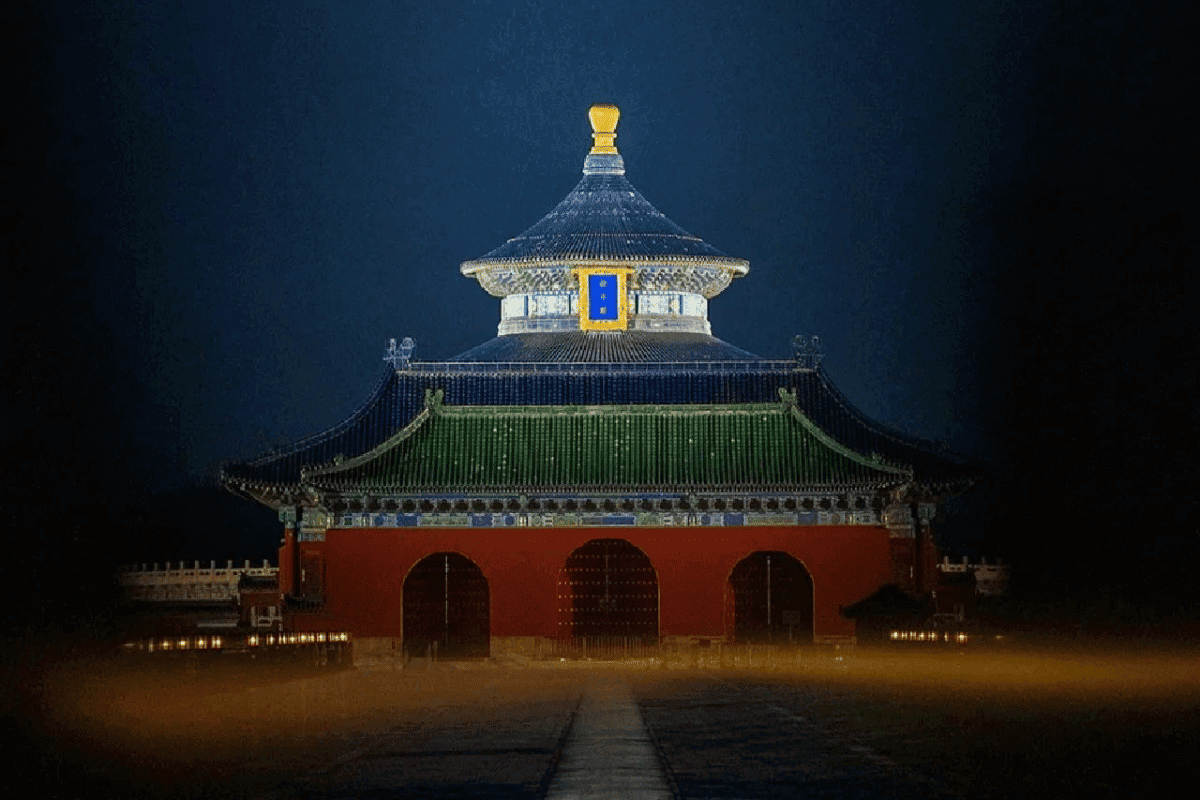
The Temple of Heaven is a complex of religious buildings located in Beijing, China. It was built in the 15th century by the Ming Dynasty Emperor Yongle as a place for the emperors to worship Heaven and pray for good harvests.
It comprises several main structures: the Hall of Prayer for Good Harvests, the Circular Mound Altar, and the Imperial Vault of Heaven.
Every year, the Temple of Heaven attracts many tourists for sightseeing and prayer.
Tips for Visiting The Temple of Heaven
- Get there early. The Temple of Heaven is massive and gets very crowded, especially in the summertime. Arrive right when it opens at 6 am to beat the crowds.
- Visit the park too. The Temple of Heaven is located in a large park area. Make sure to walk around the grounds and check out sites like the Long Corridor and Echo Wall.
- See the main attractions. The Hall of Prayer for Good Harvests is the iconic circular temple with the blue tile roof. Also visit the Imperial Vault of Heaven, a circular building on a square platform.
- Catch a cultural show. There are live shows throughout the day featuring traditional Chinese instrumental music and dance.
- Get an audio guide. An audio guide can provide helpful history and context about what you're seeing. Audio guides are available for rent on site.
- Don't miss the night view. The night view of the Temple of Heaven is dreamlike and enchanting.
🌟Best Temple of Heaven Tours
5. Summer Palace (Yiheyuan)
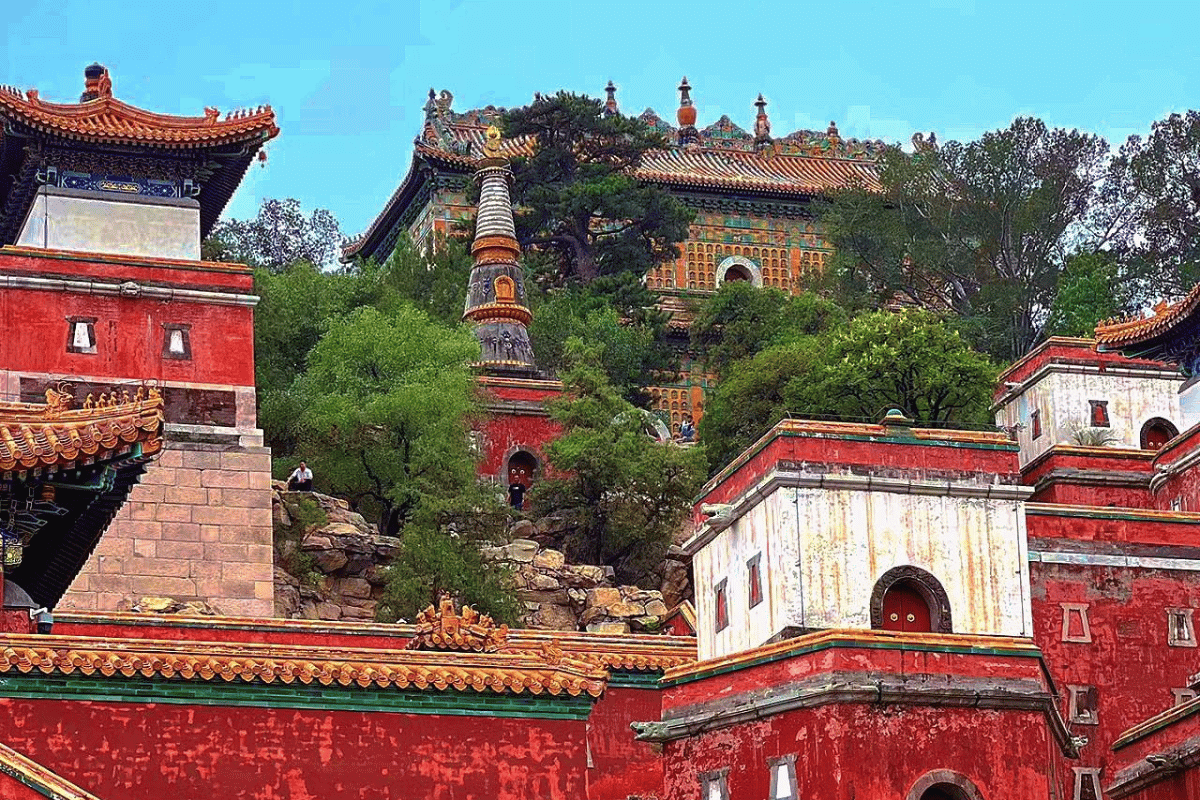
As a royal garden of the Qing Dynasty, the construction of the Summer Palace was a colossal undertaking. It comprises a vast complex of lakes, gardens, and palaces.
It was initially constructed by Emperor Kangxi in the early 18th century for his mother, Empress Dowager Xiaozhuang. Later, it was expanded by Emperor Qianlong and Empress Dowager Cixi.
The Summer Palace is a masterpiece of Chinese garden design.
The natural landscapes of hills and lakes are harmoniously combined with artificial features like pavilions, halls, palaces, temples, and bridges, creating a visually stunning and aesthetically valuable ensemble.
Tips for Visiting The Summer Palace
- Wear comfortable shoes. As you'll be doing a lot of walking,T he Summer Palace covers a large area with temples, gardens, and pavilions.
- Walk the Long Corridor to admire the painted galleries and beautiful lake views. It stretches over half a mile with over 14,000 paintings.
- Take a boat ride to cruise around Kunming Lake. Boats can be rented for a closer look at sites like the Marble Boat.
- Climb Longevity Hill for panoramic views over the palace grounds. You can hike up or take a cable car.
- Shop for souvenirs and snacks in Suzhou Street. It recreates a traditional marketplace within the palace grounds.
- Rent an audio guide if you want to learn more about the history and various sites. Audio guides are available in many languages.
🌟Best Summer Palace Tours
6. National Museum of China
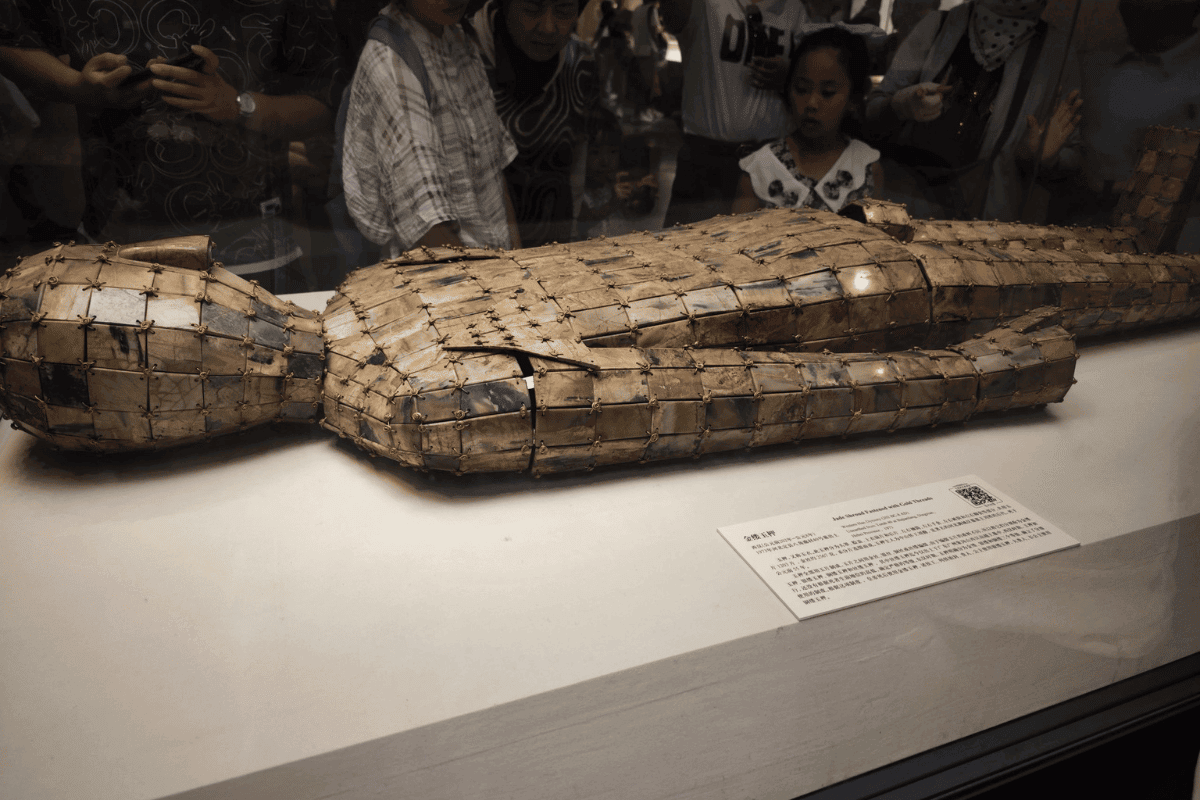
The National Museum of China (NMC) is the largest museum in China and one of the largest museums in the world.
It is located in the heart of Beijing, on the eastern side of Tiananmen Square.
The NMC was founded in 1912, shortly after the founding of the Republic of China. It was originally housed in the Forbidden City, but it moved to its current location in 1959.
It has a collection of over 1.4 million artifacts, covering all aspects of Chinese history and culture. The collection includes bronzes, jades, ceramics, paintings, sculptures, and more.
Tips for Visiting The National Museum of China
- Allow plenty of time – at least half a day, if not longer. The museum is massive with over 1 million square feet of exhibits.
- Focus on certain sections that interest you most. It's impossible to see everything in one visit. Read about the layout ahead of time to plan.
- Use the audio guide to enhance your experience. It provides helpful background on exhibits and is available in many languages.
- Visit the Ancient China exhibit first if short on time. This covers Chinese history from 1.7 million BC to AD 220 and is a visitor favorite.
- Photography is allowed but no flash or tripods. Take photos of striking exhibits but don't use flash to avoid harming artifacts.
- Pick up a souvenir at the museum shop. You'll find books, replicas of artifacts, and traditional handicrafts.
🌟Best National Museum of China Tours
7. Prince Gong's Mansion
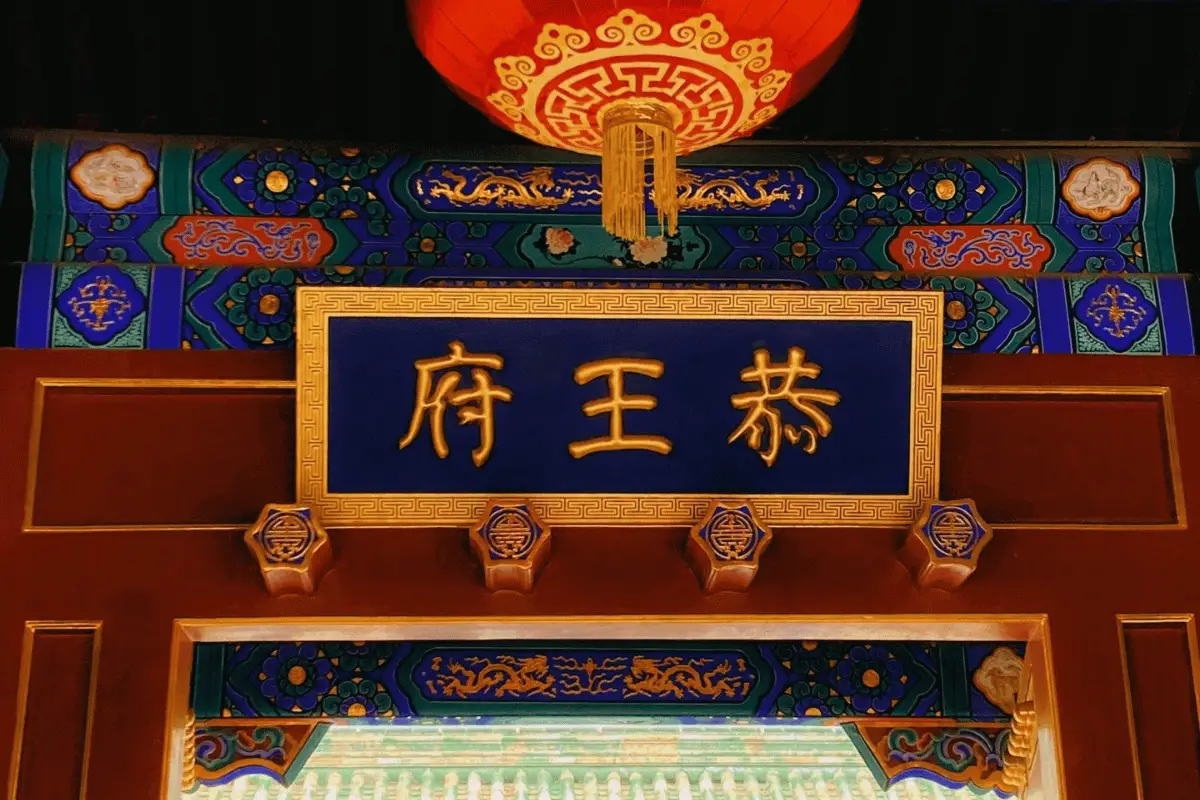
Prince Gong's Mansion (also known as the Prince Kung Mansion) is a museum and tourist attraction located in Xicheng District, Beijing, just north of the Shichahai Lake. It consists of large siheyuan-style mansions and gardens.
It is one of the most exquisite and best-preserved imperial mansions in Beijing.
The gardens of the mansion are beautifully landscaped with ponds, pavilions, and bridges. There is also a large rockery that was built by Heshen.
Prince Gong's Mansion is a valuable historical and cultural relic. It is a reminder of the Qing dynasty and the Self-Strengthening Movement. It is also a beautiful and tranquil place to visit.
Tips for Visiting The Prince Gong's Mansion
- Take a guided tour. The guides explain the history and architecture of the mansion in detail, providing useful context. English tours are available.
- Visit the tea house. Stop for traditional Chinese tea in one of the pavilions to experience the mansion as the royals would have.
- Admire the architecture. The mansion combines Chinese and Western architectural styles, with halls, gardens, and libraries.
- Read the information boards. There are information boards throughout the mansion that provide information about the history of the mansion and the exhibits.
- Enjoy the gardens. The gardens of the mansion are beautifully landscaped and are a great place to relax and enjoy the peace and quiet.
- Have a meal at one of the restaurants. There are a few restaurants on the grounds serving dim sum and other Chinese fare.
🌟Best Prince Gong's Mansion Tours
8. Tiananmen Square
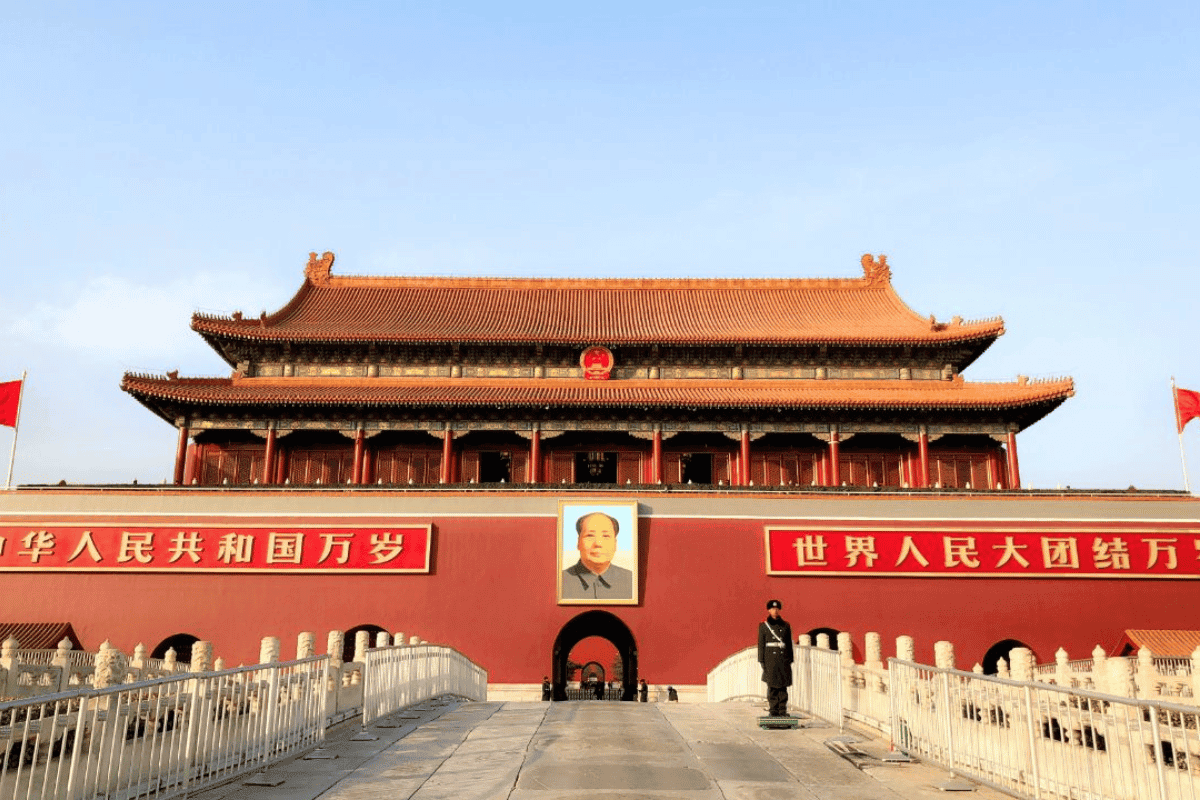
Tiananmen Square (Tiananmen Guangchang) is a large plaza in the center of Beijing, China. It is named after the Tiananmen (Gate of Heavenly Peace) which sits to its north, separating it from the Forbidden City (Zijincheng).
Tiananmen Square is the largest public square in the world, covering an area of 440,000 square meters (100 acres).
It is a major tourist destination and a significant place in Chinese history.
It has been the site of many important events, including the founding of the People's Republic of China in 1949.
Tips for Visiting The Tiananmen Square
- Stand in line respectfully. There are guards conducting security checks before entering the square. Be patient and cooperate fully.
- Watch the flag raising ceremony. Get to the square by sunrise to watch the troops march and see the national flag raised around 6 am.
- Visit Mao's Mausoleum if desired. This does have a long line so go early. Bags, cameras, and phones are not permitted inside.
- Allow extra time for security checks. Entering the square requires passing through metal detectors and bag searches which can take time.
- Respect the Chinese Flag: The square features the Chinese national flag. Be sure to show proper respect when it's raised or lowered, which happens at sunrise and sunset. Stand still and remain silent during the ceremony.
🌟Best Tiananmen Square Tours
9. Old Summer Palace
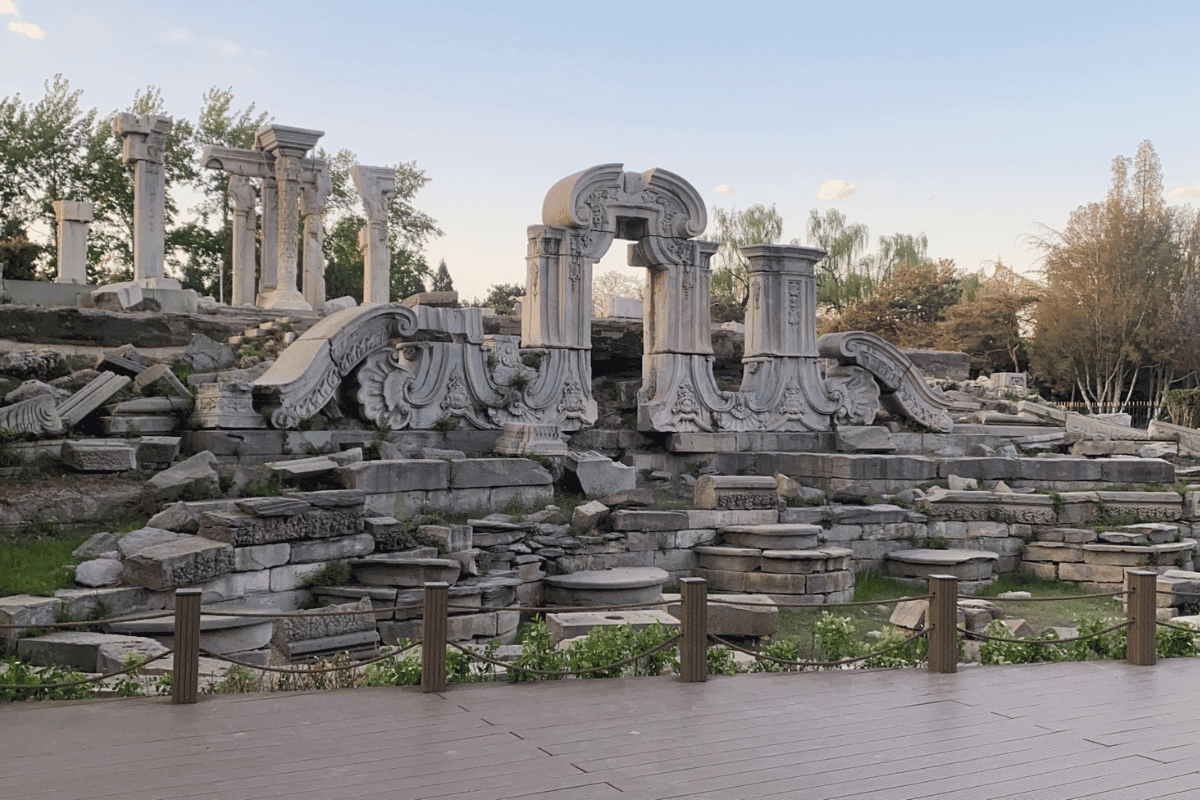
The Old Summer Palace (Yuanmingyuan) is a former imperial garden in Beijing, China. It was built in the 18th century and was once one of the largest and most beautiful gardens in the world.
However, it was destroyed by British and French troops during the Second Opium War in 1860.
The Old Summer Palace was a masterpiece of Chinese landscape gardening. It featured a variety of lakes, hills, gardens, and pavilions.
The most famous building in the garden was the Hall of Clear Ripples (Qingyi Yuan), which was built in the Qianlong Emperor's reign.
The Old Summer Palace was also home to a large collection of art and artifacts. These included paintings, sculptures, and furniture. Many of these treasures were looted by British and French troops during the Second Opium War.
After the war, the Old Summer Palace was left in ruins. It was never rebuilt, and it remains a symbol of the destruction of China's cultural heritage.
Tips for Visiting The Old Summer Palace
- Learn About Its History. Before visiting, familiarize yourself with the history of the Old Summer Palace. It was once a vast complex of gardens, palaces, and cultural treasures but was destroyed during the Second Opium War in 1860. Understanding its past will enhance your appreciation of the site.
- Plan Your Visit. The Old Summer Palace is extensive, and it's easy to spend hours exploring its ruins and gardens. Plan your visit accordingly and consider dedicating at least half a day to fully appreciate it.
- Wear Comfortable Shoes. The site is quite large and includes uneven terrain, so comfortable walking shoes are essential. Some areas may be grassy or muddy, depending on the weather.
- Guided Tours. Consider hiring a local guide or using an audio guide to gain a deeper understanding of the site's history and significance. Guides can provide valuable insights.
- Bring Water and Snacks. There may not be many food and beverage options inside the Old Summer Palace. Bring a water bottle and some snacks to keep yourself hydrated and energized during your visit.
- Combine with Other Attractions. The Old Summer Palace is located in the Haidian District of Beijing, which is home to other attractions like the Summer Palace and Beijing University. Consider combining your visit with these nearby sites to make the most of your day.
🌟Best Old Summer Palace Tours
10. Universal Beijing Resort

Universal Beijing Resort is a theme park resort located in Tongzhou District, Beijing, China. It opens in 2021 and is one of the largest theme parks in the world.
The resort feature seven themed lands centered around popular Universal franchises and Chinese culture. The lands include:
- Kung Fu Panda Land of Awesomeness
- Transformers: Metrobase
- Minion Land
- The Wizarding World of Harry Potter
- Jurassic World Isla Nublar
- Hollywood
- WaterWorld
Other major attractions include a grand entrance area called Universal CityWalk, an interactive play zone for kids, multiple hotels, dining options, performance venues, and more.
Advanced ride technology and immersive environments transport visitors into the themed worlds.
Universal Beijing Resort is a must-visit for any fan of theme parks or popular culture.
It is a truly immersive experience that will take you to the worlds of your favorite movies and television shows.
Tips for Visiting Universal Beijing Resort
- Download the park app or mini program. The app will have maps, wait times, show schedules, dining information, and more to help plan your day.
- Learn the layout before arriving. With 7 themed lands, it's huge. Study the map and plan which areas are your priorities.
- Prioritize popular rides first. Head to the busiest rides like Harry Potter and the Escape from Gringotts immediately in the morning.
- Check the show schedule. See shows like Kung Fu Panda's Daytime Spectacular to take breaks from rides and walking.
- Pack sun protection. Many areas of the park have limited shade. Hats, sunscreen, and umbrellas are wise on sunny days.
🌟Best Universal Beijing Resort Tours
11. Beihai Park
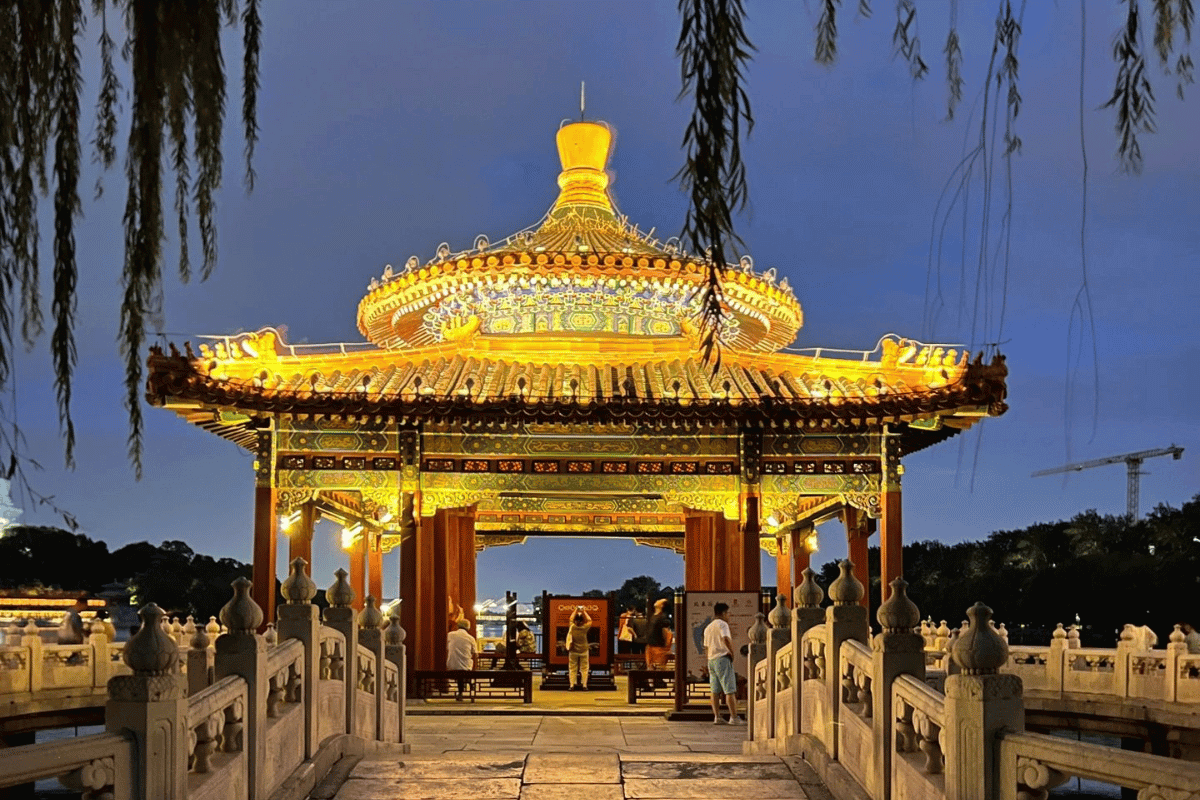
Beihai Park (北海公园) is a public park and former imperial garden located in the northwestern part of the Imperial City, Beijing, China.
First built in the 11th century, it is among the largest of all Chinese gardens and contains numerous historically important structures, palaces, and temples.
The Beihai (literally “north sea”) Lake after which the park is named sits on the western side of Jing Mountain and the northwestern side of the Forbidden City and meets the Shichahai Lake in the north.
The lake is connected at its southern end to the Central Lake and the South Lake by the Round City.
The Beihai Park is famous for its beautiful scenery. The lake is surrounded by hills and gardens, and there are many pavilions and temples located throughout the park.
The most famous building in the park is the White Dagoba, which is a Buddhist pagoda located on an island in the lake.
It is also home to a large collection of plants and flowers. There are over 4,000 different types of plants in the park, including many rare and endangered species.
The Beihai Park is a popular tourist destination and is a must-visit for anyone interested in Chinese history and culture. It is a beautiful and tranquil place to spend a day exploring.
Tips for Visiting The Beihai Park
- Visit the White Dagoba. This majestic Tibetan-style dagoba sits on Jade Flower Island and is a stunning landmark. Take time to walk around it and admire the structure.
- Walk the Nine Dragon Wall. This glazed tile wall depicting nine detailed dragons is a highlight. See how many dragons you can spot!
- Explore the imperial gardens. The Chinese gardens with rock formations, trees, and blooming flowers are lovely to wander through.
- Take a boat ride. You can take a boat ride on the lake to get a closer look at the White Dagoba and the other attractions in the park.
- See the Five Dragon Pavilions. Built in 1602, these connected pavilions on the lake are one of the park's oldest structures.
🌟Best Beihai Park Tours
12. Ming Tombs
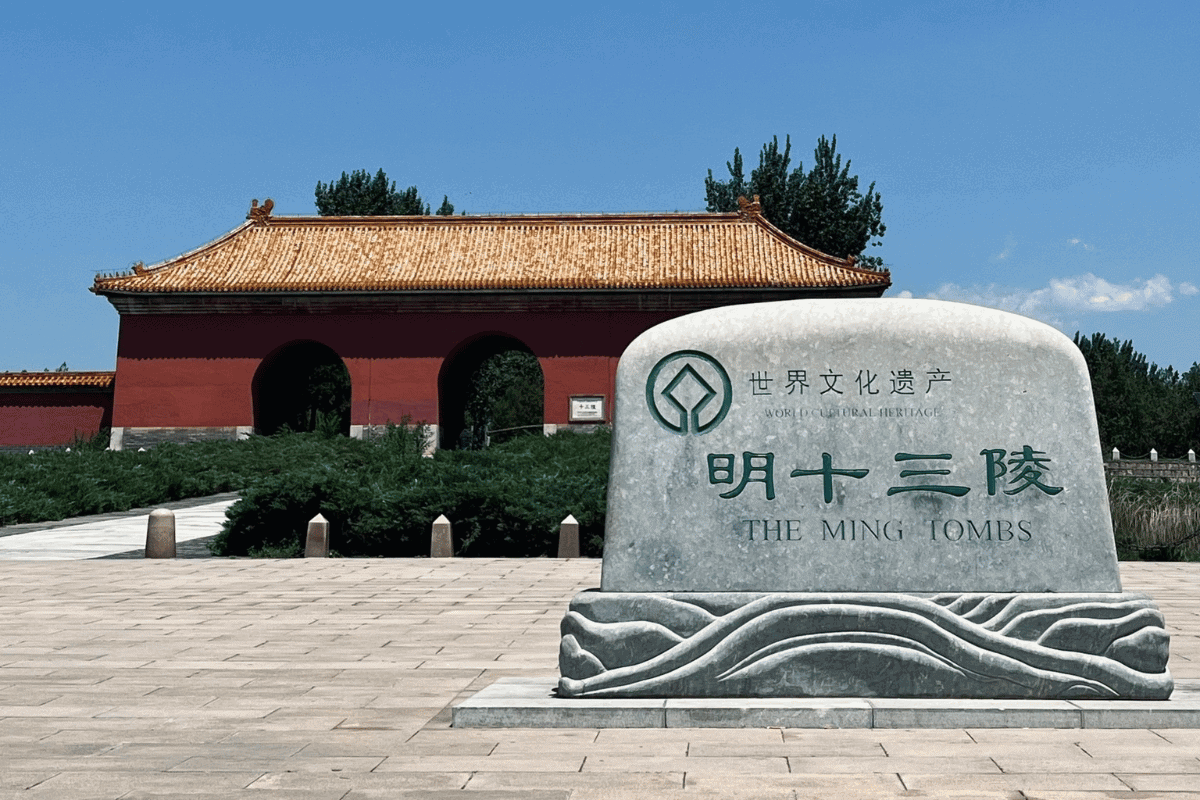
The Ming Tombs (明十三陵) are the burial places of 13 of the 16 Ming emperors of China. They are located in Changping District, about 50 kilometers (31 mi) northwest of central Beijing.
The Ming Tombs are a UNESCO World Heritage Site. They are a complex of mausoleums, temples, and other structures.
The most famous tomb is the Changling Mausoleum, which is the tomb of the Yongle Emperor.
The Changling Mausoleum is located in a valley and is surrounded by mountains. The entrance to the mausoleum is through a large gate called the Spirit Gate. The tomb itself is underground and is reached by a long tunnel.
The Ming Tombs are a popular tourist destination. They are a reminder of the power and wealth of the Ming Dynasty.
Tips for Visiting The Ming Tombs
- Consider a private transfer or join a tour group. The Ming Tombs are very far from Beijing's city center with no subway access.
- Visit the Sacred Way first. This walkway lined with stone statues leads to the mausoleum sites and makes for a dramatic entrance.
- Tour Changling Tomb. This is the largest and first imperial mausoleum built at the site. Walk underground to see the emperor's tomb chamber.
- See Dingling Tomb. This is the only tomb excavated so far, allowing you to see artifacts from the Ming dynasty.
- Wear comfortable shoes. There is a lot of walking between tombs and on uneven surfaces. Comfortable footwear makes a big difference.
🌟Best Ming Tombs Tours
13. Jingshan Park
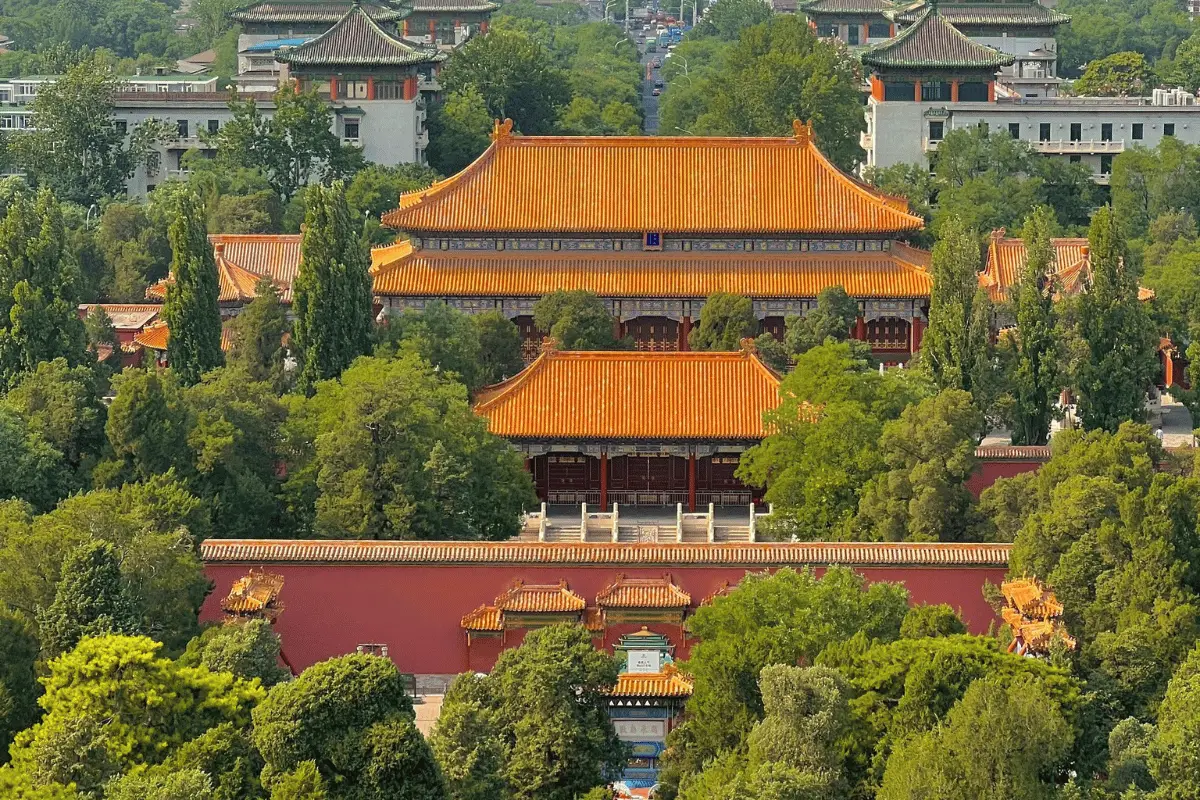
Jingshan Park (景山公园) is an imperial park located immediately north of the Forbidden City in the Imperial City area of Beijing, China. The focal point is the artificial hill Jingshan (景山, lit. ‘Prospect Hill').
Formerly a private imperial garden attached to the grounds of the Forbidden City, the grounds were opened to the public in 1928.
The park was formally established in 1949. It is listed as a Key State Park and is administratively part of Xicheng District in downtown Beijing.
Jingshan park covers an area of 23 hectares (57 acres). The artificial hill Jingshan is 45.7 meters (150 ft) high and is made up of five peaks.
The highest peak is called Wancheng Peak (万城峰), which offers panoramic views of the Forbidden City and the surrounding area.
Tips for Visiting The Jingshan park
- Climb to the top for panoramic views. The central hill offers stunning 360 degree views over the Forbidden City, giving great perspective.
- Walk the perimeter path around the base. The entire park can be circled along a paved path to enjoy scenic views along the way.
- See Wanchun Pavilion. This impressive two-story wooden pavilion was moved from the Forbidden City to Jingshan in 1928.
- See The Bell Tower. The tower is located at the southern end of the park and is one of the oldest and tallest bell towers in Beijing.
- Visit Jingshan Botanical Garden. Located on the east side of the park, the garden is home to a variety of plants and flowers.
🌟Best Jingshan Park Tours
14. Nanluoguxiang Hutong
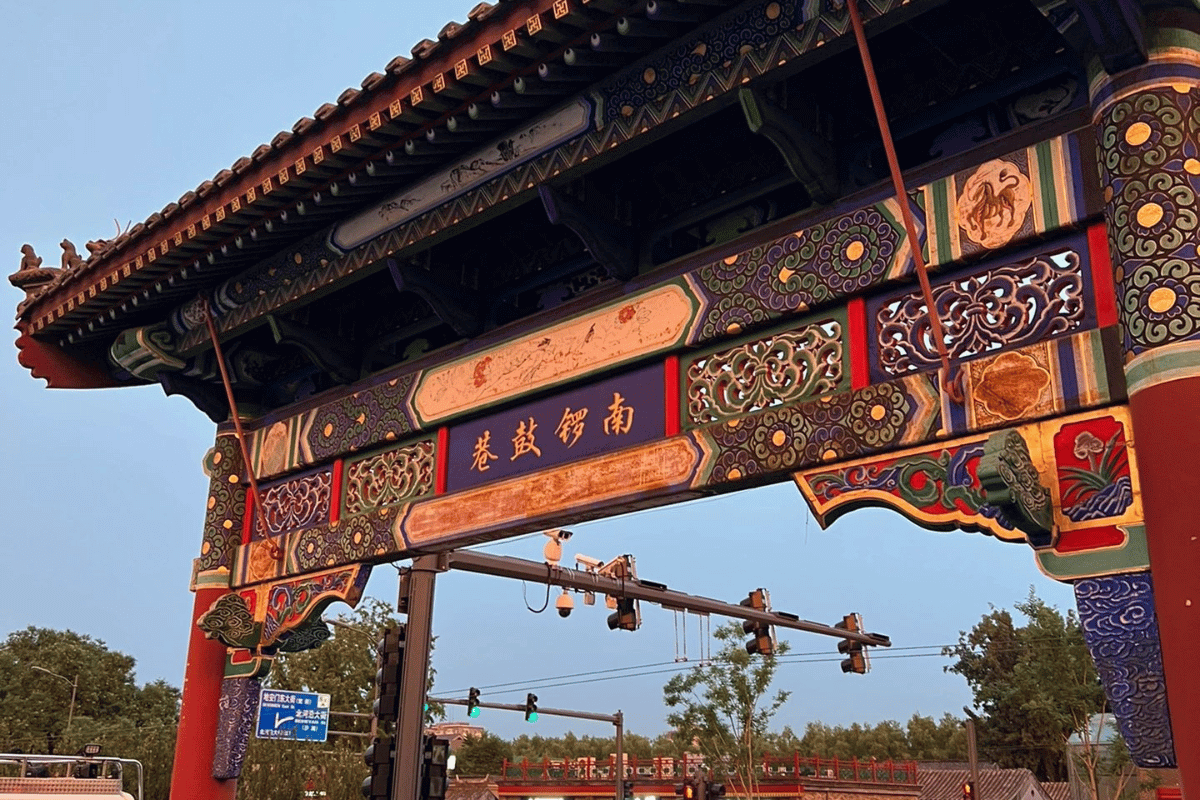
Nanluoguxiang is a famous historic hutong located in the Dongcheng district of Beijing, China. Often referred to simply as “Nanluogu”, it is one of the best preserved old neighborhoods in the city.
The hutong dates back over 700 years to the Yuan dynasty and was originally an imperial government office and warehouse area.
The narrow alleys provided access between buildings and homes housed imperial bureaucrats.
Today, Nanluoguxiang has transformed into a lively shopping, dining, and entertainment district. The once dilapidated gray brick buildings have been restored while retaining original architectural features.
Many now house boutique shops, cafes, bars, and restaurants with open air seats spilling into the alleys.
With its traditional charm and modern energy, Nanluoguxiang offers the perfect glimpse into local Beijing life.
Strolling the full length of the 1/2 mile long hutong makes for an unforgettable visit.
Tips for Visiting The Nanluoguxiang Hutong
- Try some of the local snacks sold from small food stalls and carts. Look for fried pancakes, skewers, and cold noodles.
- Pop into the small shops selling souvenirs, jewelry, clothes and more. Bargaining is expected when shopping.
- Search for preserved ancient courtyards tucked along the hutongs. You can step inside some to admire traditional architecture.
- Have a meal in one of the restaurants. There are many restaurants in the hutong serving traditional Chinese cuisine.
- Explore the hutong at your own pace. There are many narrow lanes and alleyways to explore, so take your time and wander around.
🌟Best Nanluoguxiang Tours
15. Yonghe Temple
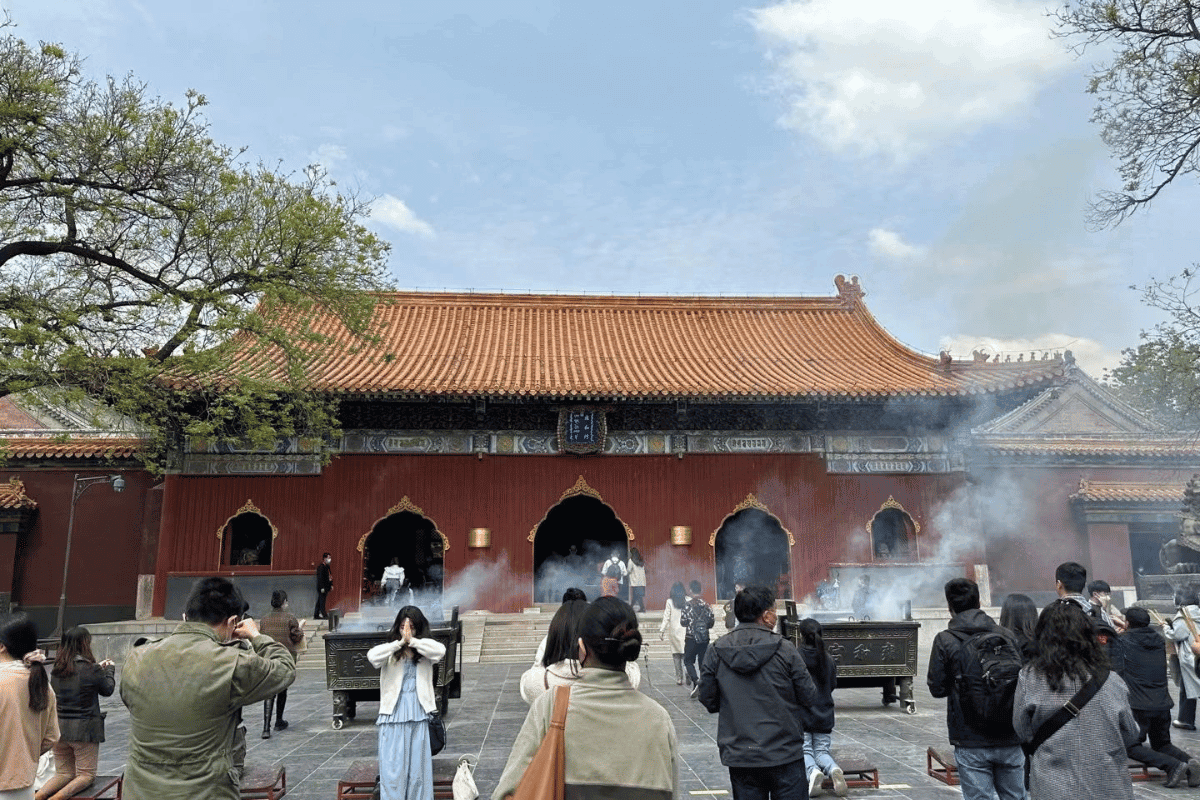
Yonghe Temple, also known as the Palace of Peace and Harmony Lama Temple, is a famous Tibetan Buddhist temple located in the Dongcheng District of Beijing.
It is one of the largest and most important Tibetan Buddhist temples in the world.
Originally built in 1694 as the official residence of Prince Yong, it was converted into a temple in 1744 during the Qing dynasty.
The temple is arranged along a central north-south axis and contains five main halls and numerous galleries.
Key highlights include:
- The Hall of the Heavenly Kings with imposing statues of the Four Heavenly Kings.
- The Hall of Harmony and Peace featuring three large statues of Buddhas.
- The Hall of Everlasting Protection with a 18 metre tall statue of Maitreya Buddha carved from a single piece of white sandalwood.
With its serene courtyards, incense-filled halls, rotating prayer wheels, and resident monks, Yonghe Temple is a calming oasis in Beijing's urban sprawl and a must-visit for an authentic Tibetan cultural experience.
Tips for Visiting The Yonghe Temple
- Dress respectfully. Shoulders and knees should be covered when visiting the temple halls.
- Prayers are typically offered in the morning. If you intend to offer prayers, you need to go and receive incense.
- You can obtain a consecrated bracelet at the Dharma Item Distribution Center(法物流通处).
- Remember not to step over the threshold. Such behavior is considered disrespectful to the Buddha.
- Be quiet and respectful. The temple is a place of worship, so be quiet and respectful when you are inside.
- Wearing sunglasses and taking photos of the Buddha statues is not allowed. This is considered disrespectful to the Buddha.
🌟Best Yonghe Temple Tours
16. Fragrant Hills Park
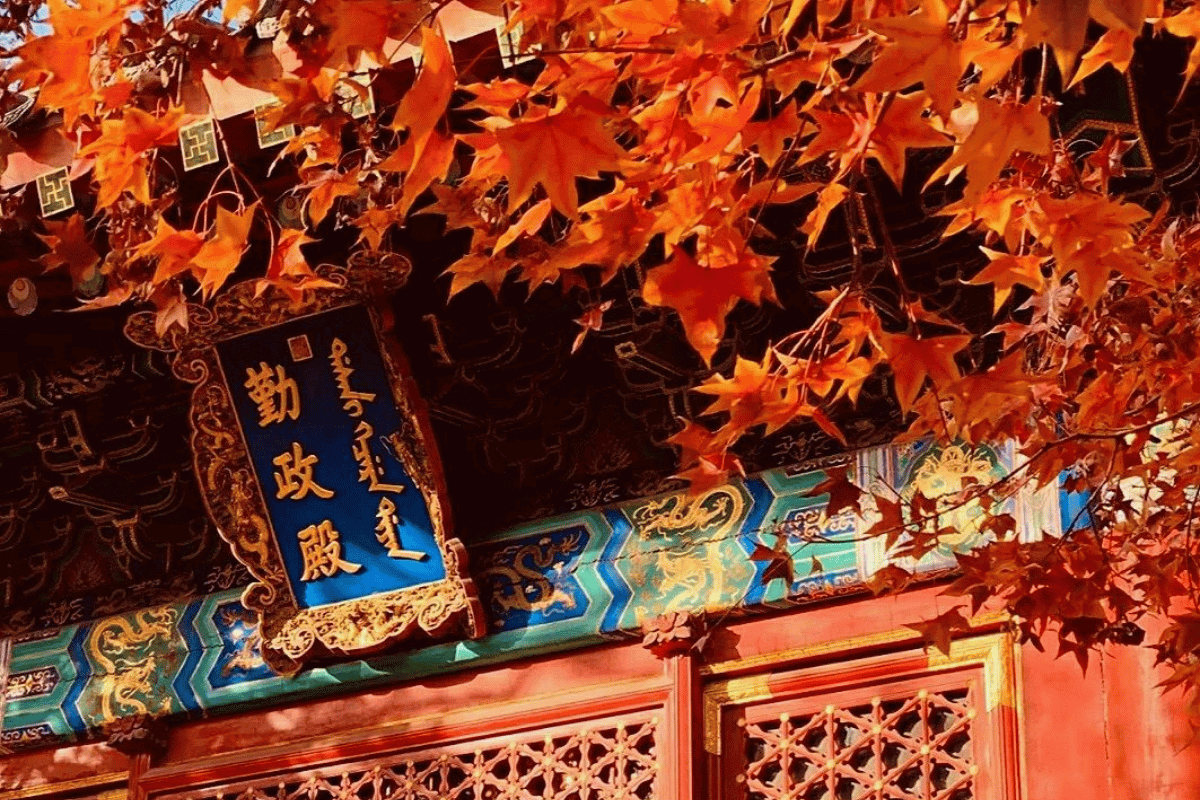
Fragrant Hills Park, or Xiangshan Park, is a large public park located in the Haidian District northwest of central Beijing, China.
Known for its striking autumn scenery, it is one of the most popular parks in Beijing.
The park covers an area of 160 ha (395 acres) and consists of a natural pine-cypress forest, hills with maple trees, smoke trees and persimmon trees, as well as landscaped areas with traditional architecture and cultural relics.
The name derives from the highest peak of Fragrant Hills, Xianglu Feng (Incense Burner Peak), a 557-meter (1,827 ft) hill with two large stones resembling incense burners at the top.
Features spectacular red maple leaves in autumn that turn the hills bright crimson.
If you plan to visit Beijing in the fall, be sure not to miss Fragrant Hills Park.
Tips for Visiting The Fragrant Hills Park
- Visit in mid-October to see autumn leaves at their peak. The bright red maple leaves are stunning against the mountain backdrop.
- Ride the cable car up for scenic views over the hills and forest. It's a quick and easy way to access the top.
- See the Temple of Brilliance and climb the Smoke Tree Pagoda for panoramic views from above.
- Allow 3-5 hours to stroll around the lake, hike trails, and see the temples and pagodas. It's large.
- Take a boat ride. You can take a boat ride on the Houhai Lake to get a closer look at the Xianglu Peak and the other attractions in the par.
🌟Best Fragrant Hills Park Tours
17. Confucius Temple and The Imperial College Museum
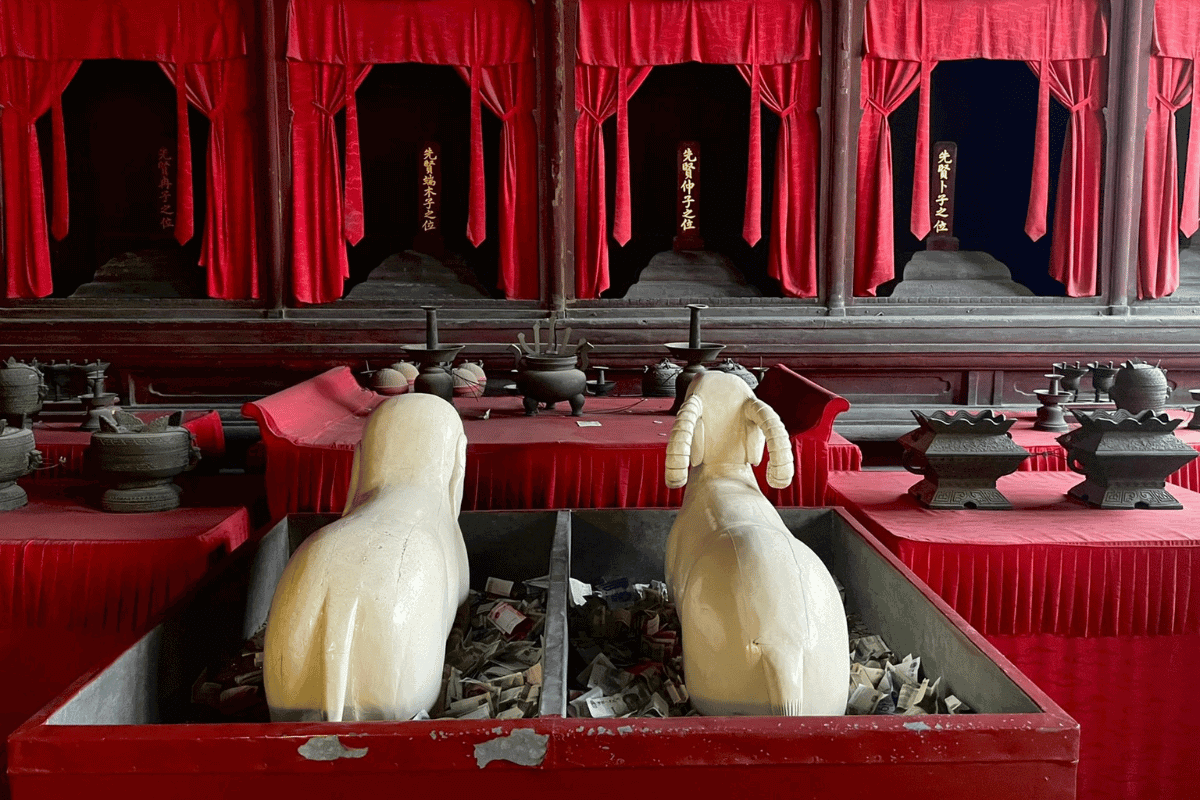
The Confucius Temple and The Imperial College Museum are two of the most important cultural and historical sites in Beijing, China.
The Confucius Temple is a complex of buildings dedicated to the worship of Confucius, the ancient Chinese philosopher and educator.
It was built in 1302 during the Yuan dynasty and has been rebuilt and expanded several times over the centuries.
The temple is a UNESCO World Heritage Site and is one of the most important Confucian temples in the world.
And the Imperial College Museum is located within the Confucius Temple complex.
It was founded in 1925 and houses a collection of artifacts related to Confucianism and Chinese education.
The museum's collection includes bronzes, jades, paintings, calligraphy, and rare books.
Many Chinese people bring their children to worship Confucius, praying for academic progress and a successful career
Tips for Visiting The Confucius Temple
- See the ancient trees, some dating back to the 14th century. The cypresses and pagoda trees are impressive.
- Visit the Imperial College Museum to see ancient study materials and imperial examinations.
- See the Temple of Brilliance and climb the Smoke Tree Pagoda for panoramic views from above.
- Kowtowing to Confucius. The hand gesture involves clasping your hands together and placing both hands in front of your forehead for worship.
- Passing through the Liuli Archway. It symbolizes the ‘carp leaping over the Dragon Gate,' signifying a leap to success or advancement.
- Touching the stone statue's head. Many tourists touch the head of the stone statue at the threshold, symbolizing the desire to stand out and excel.
🌟Best Confucius Temple Tours
18. Badachu Park
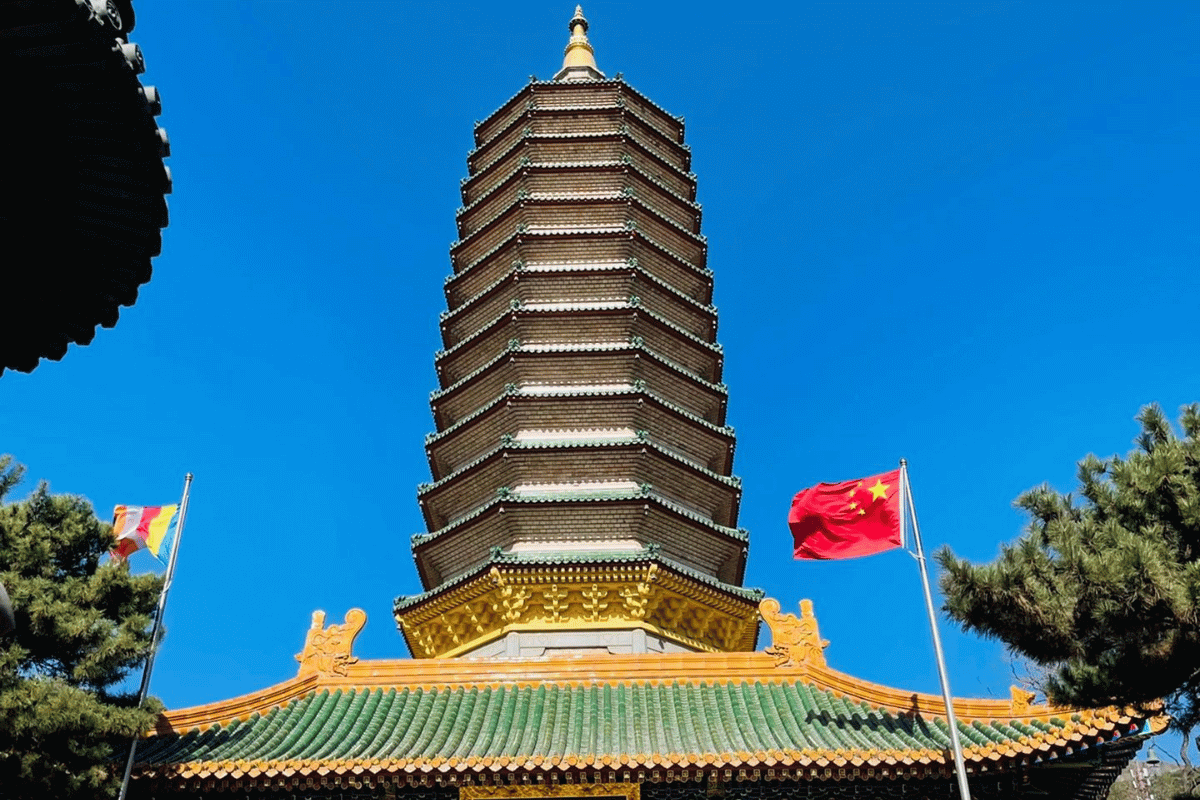
Badachu Park is a scenic area nestled in the forested hills of western Beijing. Translating to “Eight Great Sites”, it contains eight Buddhist temples and monasteries dating back to the Tang Dynasty, each devoted to a different legendary monk.
Covering over 125 acres of protected vegetation and forest, the park provides a nature escape right in Beijing's backyard.
Walking the circular routes that connect the temples is a highlight, as they meander through tranquil hills, gardens, and pagodas.
Cable cars also offer scenic views across the lush landscape and access to temples at higher elevations.
During spring, the temples are surrounded by blossoming orchards and peach trees, while autumn foliage creates another picturesque backdrop.
Key attractions include the Botanical Temple with medicinal gardens, the Snake Temple, and the Temple of Azure Clouds.
There are also vegetarian restaurants at some of the temples where you can sample Buddhist cuisine
Tips for Visiting The Badachu Park
- Best time to visit is in spring or autumn when the weather is mild and the blossoming trees and flowers are at their peak.
- Visit the temples in clockwise order starting from the bottom of the hills to follow along with the traditional Buddhist pilgrimage route.
- Highlights include the Bodhisattva Pavilion which has a giant golden statue of the Maitreya Buddha and the Cool and Clear Terrace Pavilion atop Lotus Peak for panoramic views.
- Stop for a vegetarian lunch at one of the monasteries which serve simple Buddhist fare to pilgrims and visitors.
- Considering the cable car and the slide. Viewing the temple from high above offers a different perspective and a unique scenery.
🌟Best Badachu Park Tours
19. Hongluo Temple
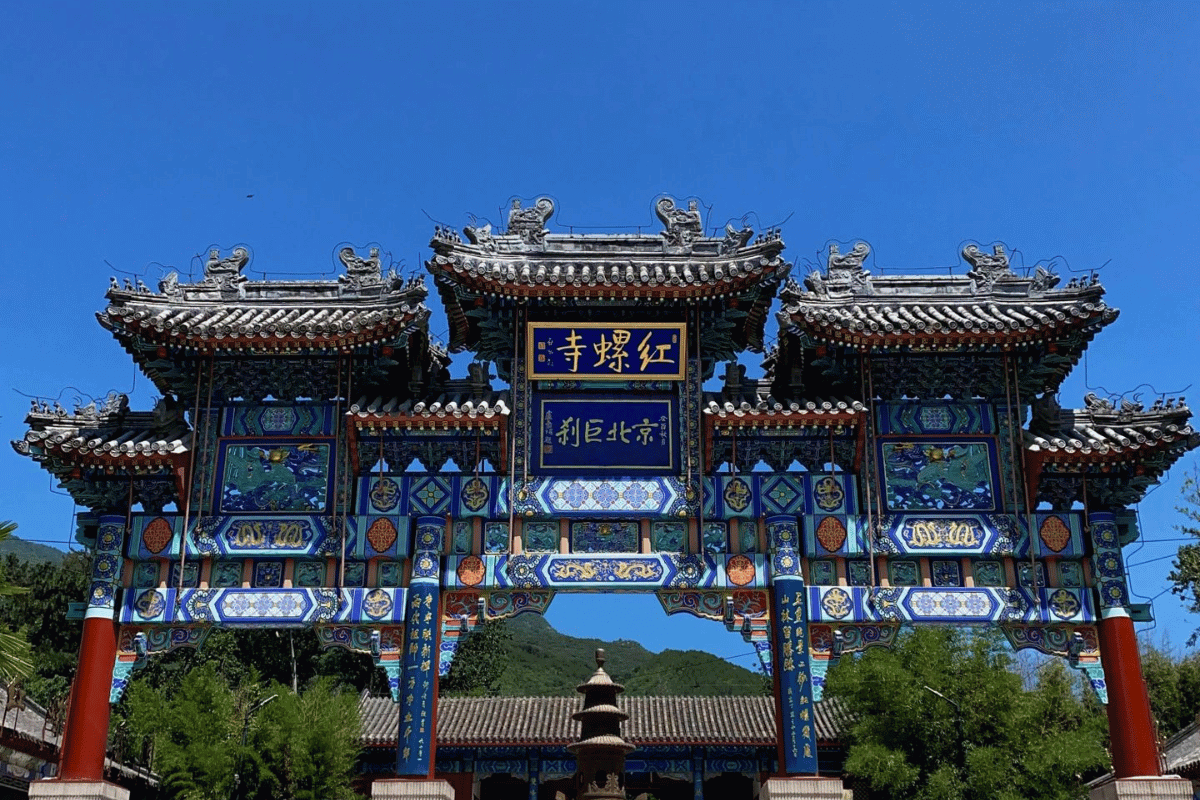
Hongluo Temple is a Buddhist temple located in Huairou District of Beijing. Its history dates back to the Eastern Jin Dynasty, and it is considered the birthplace of Buddhism in northern China.
Within the temple grounds, there are numerous beautiful natural landscapes, including the Guanyin Temple, the Pine Forest Bathing Garden, and Hongluo Mountain, which together create a picturesque scene.
Hongluo Temple also boasts a well-preserved ecological area with lush vegetation and a pleasant environment, making it a truly scenic spot.
The perfect ecological environment, serene natural beauty, and rich cultural heritage within Hongluo Temple make it a veritable “Shangri-La” for those seeking a tranquil escape from the hustle and bustle of everyday life.
Tips for Visiting The Hongluo Temple
- Seeking love. The most popular activity at Hongluo Temple is seeking a marriage partner, and you can ‘do as the locals do'.
- Purchasing a bracelet. Tourists believe that consecrated tokens can bring ‘good luck,' and they also make for good souvenirs.
- Prepared for climbing. Wear comfortable shoes and sunscreen because you'll be climbing several mountains and walking a lot.
- Don't miss out on the roller coasters. Enjoy the thrill of speeding downhill from the mountain's peak all the way to its base.
🌟Best Hongluo Temple Tours
20. Olympic Park
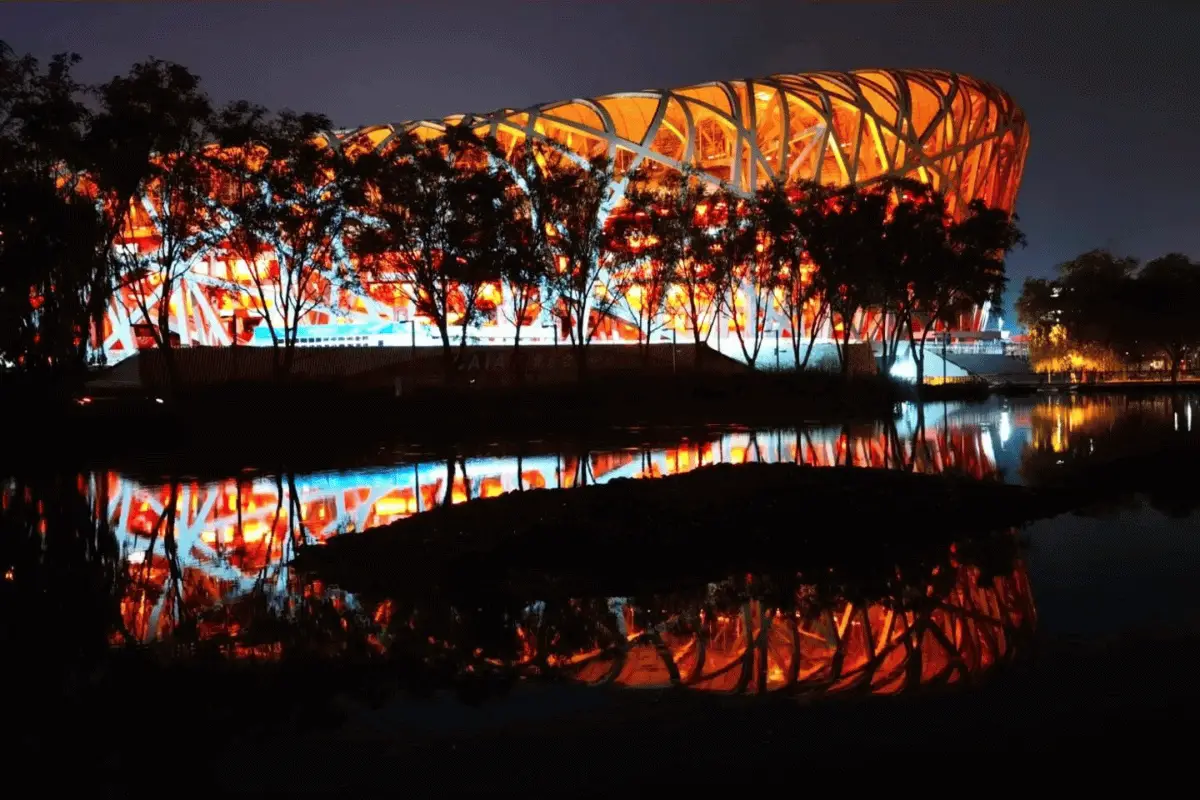
Beijing's Olympic Park was constructed as the main venue for the 2008 Summer Olympic Games.
Located in the north of central Beijing, the Olympic Park covers over 11,000 acres and contains several iconic structures, including the Bird's Nest National Stadium and the Water Cube Aquatics Center.
Architecturally striking, the stadium's woven steel frame envelops 91,000 seats and hosted the opening and closing ceremonies, track events, and soccer finals.
Next door, the Water Cube's blue rectangular boxes form a massive floating “bubble” which held swimming and diving events.
Other highlights of the park include the Olympic Forest Park with walking trails, the China National Convention Center, and the Digital Beijing Building shaped like an upside-down pyramid.
Visitors can tour the Olympic venues, stroll around the central axis and landscaped walking routes, see architecture from leading modern designers, and reminisce about the 2008 Summer Games that introduced Beijing to the world.
Tips for Visiting The Olympic Park
- 100% recommend visiting at night. At night, all the venues have beautiful light displays that are spectacular, and it's not too crowded.
- Experience night cycling. The Olympic Park is quite spacious, but the terrain is flat, making it perfect for cycling tours.
- Shopping while strolling. There's a very large underground mall, so you can enjoy the pleasure of shopping while having fun
🌟Best Olympic Park Tours
21. Bell Tower and Drum Tower

Located in the heart of old Beijing, the Bell Tower and Drum Tower are two historic structures that date back over 600 years to the Ming Dynasty. Sitting just 52 meters apart, this pair of towers once functioned as the city's official timekeepers.
The Bell Tower, originally built in 1272, stands at 47 meters tall and contains a 63-ton bronze bell struck at dawn to signify the morning.
The slightly shorter Drum Tower was used for marking sunset and nightfall with drum ceremonies. Both buildings feature classic Chinese architecture styles with gray tile roofing and painted red pillars supporting multiple levels.
Today, the two towers are open to visitors as museums.
You can climb to the top for panoramic views over the hutongs and courtyards of the surrounding neighborhood.
On the ground level, exhibits showcase photos and historical artifacts demonstrating the towers' past role in timekeeping.
Drumming performances still take place at the Drum Tower a few times each day.
Tips for Visiting The Drum & Bell Tower
- The stairs to the tower are very steep, although there are handrails on both sides, it is still a big challenge for people with acrophobia.
- Don't miss the drum performance and light show.
🌟Best Drum & Bell Tower Tours
You May Also Like:
